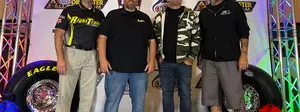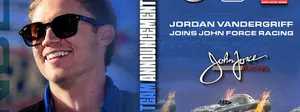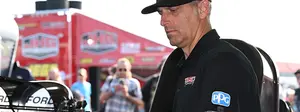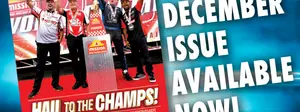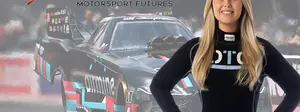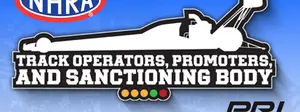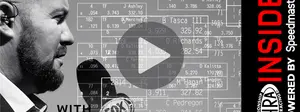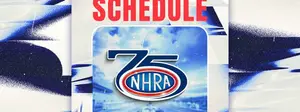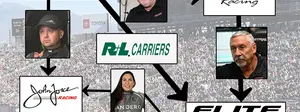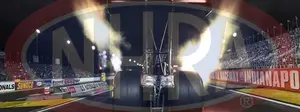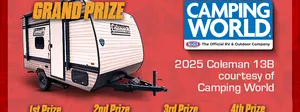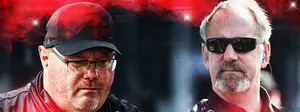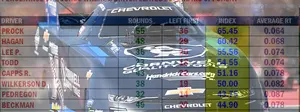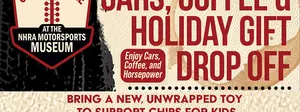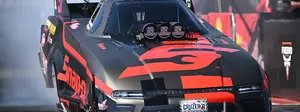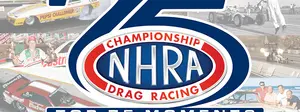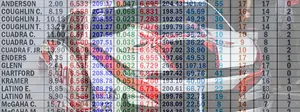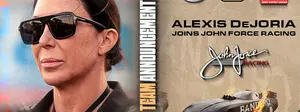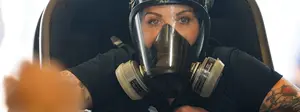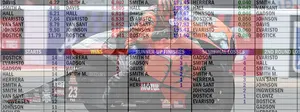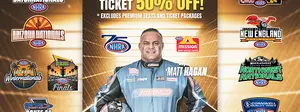

'Kansas John' Wiebe

Steve Reyes
|
Ask someone on the street about Kansas, and you’ll probably hear something about wheat fields, The Wizard of Oz, or, for the rockers out there, wayward sons carrying on. Ask any longtime drag racing fan about Kansas, and you’ll probably be hearing about John Wiebe.
The 34th state has produced a lot of fine drag racers, from Top Gas legend Ray Motes to guys like Bob Sullivan (of Pandemonium fame), Billy Graham, Gary Cooper, Norm Gingrass, Dale Wilch, Dick Custy, and Tim Baxter and current-day hitters like Randy Meyer, Gary Stinnett, and Todd and Allan Patterson, but the guy they called “Kansas John” really put the Sunflower State on the drag racing map.
Unless you count James Earp, brother of Wyatt Earp, or politician Jesse Unruh, Wiebe may be the biggest thing to come out of Newton, Kan. -- 25 miles north of Wichita, in the heart of Kansas-- since the Atchison, Topeka and Santa Fe Railway in 1872. He’s certainly the fastest.
The three-time AHRA Top Fuel world champ, NHRA national event winner, pioneering racer, and slingshot holdout raced professionally for 12 seasons in Top Fuel before his sudden and unexpected retirement in early 1977, but he left behind a legacy rich enough to survive four decades on the sidelines.
Born in 1942, Wiebe was raised on a dairy farm and developed his affinity for speed and power at an early age. At 12, he built a go-kart using the motor from a grain auger, then graduated to chainsaw engines. By the time he left high school, he was hot rodding his street cars.
After college, he leased a service station on I-35 in Newton and spent $1,400 to buy one of the region’s first oscilloscopes, an early diagnostic and tuning tool. His ads read, “See your engine on TV.” Locals thought the device was magical, and before long, racers were calling on his services, and he was gaining valuable knowledge along the way.
Around the same time, Wiebe got his first serious race cars, a ’34 Ford followed by a ’23-T roadster, both of which had supercharged engines. In 1964, AHRA officials deemed his car “too fast” for the class he was running and bumped him up a class. “I was pretty easygoing, but I almost felt violated by this decision,” he remembered. “I went home and decided that I was going to go Top Fuel racing to make sure that wouldn't happen to me again. I’d been around but hadn’t ever thought before about racing Top Fuel and didn’t really know how to run one, but the next day, I called Woody Gilmore and ordered a car.”
 |
He raced locally, in Ark City and Wichita, before journeying to Tulsa, Okla., and legendary Southwest Raceway, then home of the NHRA World Finals and stomping grounds for guys like Bennie “the Wizard” Osborn, Jimmy “the Smiling Okie” Nix, Bob Creitz, and other Midwest terrors. He stunned everyone by running 200 mph to gain entrance into the prestigious Mickey Thompson 200-mph Club.
“Tulsa was the hotbed, and if you did well there, that was really saying something,” he said. “At one race, I beat the Beach Boys in the final and won $2,000. I was in tall cotton, and that was when I decided to race professionally.”
His big AHRA moment came early, at a contentious event at Green Valley Race City in Smithfield, Texas, where Art Malone was the star attraction for a 64-car field. The racers – for reasons Wiebe can’t recall – staged a sit-in strike on the starting line one night, and the next day when AHRA President Jim Tice started looking for the guilty parties, only Wiebe stepped up and admitted his involvement. His punishment was to race Malone in the first round, and he beat Malone.
“That made me an instant hero with the racers,” he remembered, “and after the run, Tice came up to congratulate me and said he liked my honesty and integrity and asked me to run all of his races with the promise of guaranteed money. I had to race somewhere, and getting paid to do it seemed good, and we raced AHRA so we could afford to run NHRA events.”
Although he set the AHRA national record at 7.40 in late 1966 (also at Green Valley), according to The Top Fuel Handbook, he didn’t win his first national event until May 1969, when he won the AHRA Southern Nationals in Memphis, Tenn., which gave a hint that bigger things were coming, and they were.

John Wiebe, far lane, came within a whisker of winning both the NHRA and AHRA world championships in 1970. After winning the AHRA crown, he lost the NHRA title on this final-round holeshot against Ronnie Martin, 6.65 to 6.62.
|
When AHRA introduced its Grand American Series of Professional Drag Racing in 1970, the timing was perfect for Wiebe. With Don Garlits sidelined by his terrible accident at Lions, Wiebe went on a tear, winning the first of three AHRA Top Fuel championships, and he came within a round of winning NHRA’s world championship that year as well, losing the final round at Dallas Int’l Motor Speedway. He set low e.t. and top speed in the final round at 6.62, 226.70 but lost on a holeshot to Ronnie Martin’s 6.65.
His fellow Top Fuel drivers voted him the winner of the Mike Sorokin award as the year’s most outstanding Top Fuel driver. “Because it came from my peers, that was one of the highlights of my career,” he admitted.
He became friends with the legendary and ever-quotable Ed Donovan (who once told him, “You’ll never go faster hanging around people who go slower.”), and they batted around ideas with one another on a regular basis. Wiebe started the 1971 season strong, including a runner-up to Garlits at the NHRA Springnationals, and even though Donovan was racing with Creitz at that time, he tapped Wiebe to be the first to race his revolutionary new aluminum 417 engine, which was patterned after the racer-friendly 392 instead of the newer 426.
“He and Creitz had a car together at the time, so it was a little bit awkward for me to get the engine, and, to be honest, I don’t really have an answer as to why he chose me; it was kind of like the crazy aunt in the closet – nobody talked about why,” Wiebe said with a laugh. “I think maybe that Ed realized that I was pretty driven and focused and that I was big on attention to detail and open to trying stuff.”

Wiebe, left, and Don Prudhomme, Ed Donovan, Don Garlits, and the Donovan 417 were on the cover of Hot Rod magazine.
|

While his peers had jumped en masse to the rear-engine design, Wiebe doggedly stuck with the slingshot and even experimented with this wing, which he had built by Doug Kruse for this car that he ran with Ed Donovan. The experiment did not go well or last long as the wing came loose in the lights and struck Wiebe in the head at the Las Vegas divisional event. “It could have been a lot worse; I don’t even know why I put that thing on,” he admitted. (Reyes photo)
|

Wiebe finally switched to a rear-engine car in 1973 and was rewarded with his first NHRA national event win, defeating AHRA archrival Don Garlits in the final.
|
The Donovan 417 was 55 pounds lighter than the original 392, and the interchangeable steel sleeves for each cylinder made it a strong and reliable piece, and it also cooled more uniformly than the 392. The engine’s pushrod angles were less severe than those of its counterparts, and the engine required much less ignition lead (30 to 40 degrees compared to 60 to 70 for the 426) and, overall, was more efficient. Wiebe remembers that he didn’t get the block until just before the 1971 Supernationals – Donovan appropriately flipped the starter switch for the first warm-up -- and, after overcoming a series of new-engine glitches, put down the first laps at Irwindale Raceway before heading to Ontario Motor Speedway.
Although he would qualify No. 1 at 6.53 with the engine at its debut at Ontario, Wiebe had to settle for runner-up honors behind Hank Johnson after smoking the tires in the final following a prolonged staging battle that built too much heat – and power -- into the engine.
“People had a lot of misconceptions about the engine,” said Wiebe. “They thought Donovan was building it just to be a lightweight engine, but really he did it for strength because we were splitting the cylinder walls in those old 392s. I don’t remember even a lot of attention being given to the project that year because it was a 392 engine, that is until we set low e.t. in Ontario. I think all of those guys who were running the ‘elephant’ [426] were paralyzed by fear that the engine would keep doing that.”
Some didn’t stay paralyzed for long. Dick Crawford, who worked with Donovan to develop the engine, remembers showing up at the shop Monday after the race to find a line of racers wanting to talk to Donovan.
As successful as the engine was, Wiebe and longtime crewmember "Sonar" Steve Phillips were still running his front-engine slingshot, even though Garlits’ win at the 1971 Winternationals had put the handwriting on the wall that the rear-engine design was the way to go.
“Garlits told me that it took more power to run a rear-engined car (due to their weight), and my front-engine car was running just fine,” he explained. “Maybe he just didn’t want me to run one. Plus, I knew there were some bugs with those cars, and I figured that I could always go that route once they worked out. I was a little stubborn. I said earlier that I wasn’t afraid to try things; try is one thing, change is another.”
(In an early 1972 interview in Drag Racing USA, Wiebe also explained that he felt safer in the front-engine car, protected as such on the sides by the rear tires in the case of a wreck, and because his new 417 didn’t oil, he wasn’t worried about engine fires, one of the real and advertised advantages of the rear-engine car. ”Therefore, I will run this combination for the rest of the year until there’s a better way to improve,” he said.)
Wiebe stuck with the front-engine design through the 1972 season and went winless. Garlits, who had won the 1971 AHRA crown, won it again in 1972, and Wiebe finally relented and had Ed Mabry build him a rear-engine car for the 1973 campaign.
Success came quickly. He won the 1973 AHRA Grand Am at Green Valley and not long after scored his first NHRA national event win, at the Springnationals in Columbus, where he beat none other than Garlits in the final. Wiebe was leading the AHRA points over Garlits. Things looked as if they were back on the upswing for “Kansas John.”
Then came Tulsa.
Garlits’ PRA National Challenge, which was scheduled by AHRA in Tulsa in August, the week before the U.S. Nationals (the original event, in 1972, was scheduled on top of Indy), offered a big payday, and Wiebe was eager to get some of it. He qualified No. 1 with a 6.11 and drew young Jeb Allen in a fateful first-round matchup.
“After we ran low e.t., we pulled the heads, and No. 7 looked like it hadn’t hardly even fired. I would run three different compression ratios in my motor -- the pistons are like little soldiers, but one of them doesn’t know what the other one is doing; if 7 and 8 don’t want to do their job and burn, you make them do it -- so I just put a higher compression piston in that hole and tightened the nozzle down.
“I was so pumped up for the first round that I even put a little more clutch into it. It left and started shaking. I drove through it, but the back end was hopping and then started coming around; I lifted, but with that spool [rear end], it just drove me right into his lane and into the side of his car, and we started rolling.
“It seemed like it lasted 20 minutes,” Wiebe remembered. “I always remember Pat Foster saying, ‘Tip the can and sit low,’ so I got down in there as low as I could, which pushed my legs up higher.”
The two collided about 200 feet downtrack and began a horrific and fiery tumble. Wiebe’s car ended up on top of the guardrail back in his lane, but because the guardrail support posts stuck out above the top of the guardrail, as he slid down the top of the rail, he suffered a compound fracture of his right leg. Garlits won the race, and at that point, it seemed that Wiebe’s bid for a second AHRA championship had come to an end.
OK, stay with me because this is where it gets sticky.
Surprisingly, West Coast heroes James Warren and Roger Coburn stepped in, at Wiebe’s request, to help. At the time, AHRA rules dictated that the points stayed with the car and not the driver, so Warren and Coburn could fly Wiebe’s colors and earn points for him. It’s such a bizarre scenario that you understand why the rules soon changed.
A financial agreement was quickly struck, and Warren and Coburn wrapped their Rain for Rent dragster with Wiebe’s name and, with AHRA’s blessing, showed up at the next AHRA event, the Grand Am at Orange County Int’l Raceway. Reportedly, Garlits was unaware of this development, and thinking that Wiebe’s championship bid was over, chose to enter his experimental “shorty” dragster (180-inch wheelbase). He got beat in round one (as did Butch Maas driving Garlits’ Wynn’s Liner), and Warren won the race, which should have given Wiebe back the points lead, right? But …

With Wiebe out of action with a broken leg, the California duo of James Warren and Roger Coburn carried Wiebe's colors into the final two races of the 1973 AHRA season (as was allowed then by the rules) and lost a winner-take-all final round to Garlits at the final event in Fremont. (Reyes photo)
|
According to Drag Racing USA, Garlits lodged a protest with AHRA and, incredibly, won the appeal because, according to AHRA, "Garlits was not given fair notice of the Warren entry.” The article was not clear about whether Warren/Wiebe was stripped of points or somehow Garlits was given points, and no article I can find explains who had the lead heading into the season finale, the AHRA World Finals at Northern California’s Fremont Raceway.
I contacted Garlits for his memories on this subject. His recollection is that Wiebe had the points lead going into Fremont. “There was no appeal,” he insisted. “I did raise hell, but Tice insisted that Warren run in Wiebe’s place, and I beat them anyway. Don ‘Mad Dog’ Cook made up a rhyme: ‘All of Tice’s horses, and all of Tice’s men, couldn’t beat "Big Daddy," now or then.’ Tice saw Wiebe as the next Don Garlits and was moving me into the spot as president of the AHRA, then he died, and the wife thought differently about me running the association. Tice liked me just fine but was figuring on Wiebe to replace me when I took over the presidency. I wasn't ready for that just yet.”
Regardless of who had the lead, it all got settled in Fremont. As Wiebe remained hospitalized and in a full-leg cast in Kansas, Garlits qualified No. 1 with a 5.97, and, after a week’s rain delay, Warren matched that e.t. in winning his first-round race. As if following a script written in Hollywood, Garlits and Warren both reached the final round with the title in the balance. They launched evenly, but “Big Daddy,” as he has done time and again, saved the best for last and ran low e.t., 5.95, to easily outdistance Warren’s troubled 6.35 for the championship, his third straight.
Come Winternationals time, Wiebe was healed and ready. He ran well but never got further than the semifinals (at the Springnationals) and ended the year not qualifying for the tough World Finals field yet still finished a respectable fourth (behind Gary Beck, Dave Settles, and Herm Petersen) in NHRA’s first points-based championship year. He also slayed his National Challenge demons by dominating the 1974 version, which had been moved east to New York National Speedway.

Wiebe won the AHRA Top Fuel title in 1975 and 1976, then retired in early 1977.
|
Wiebe finished just 10th in the NHRA standings in 1975 but won his second AHRA championship and repeated the title in 1976, his final full season. He finished seventh in NHRA points in 1976 and just missed winning the U.S. Nationals when he received a red-light in the final round against Richard Tharp on a weekend when there was speculation that erroneous red-lights were being triggered by “shineback” from the sun on polished front wheels. In addition to the Top Fuel final, the Pro Stock and Pro Comp final rounds were decided by red-lights.
In light of those successes, when Wiebe, still in his mid-30s, announced in early 1977 that he was retiring, it was a real bombshell. He ran only the early part of the season, with his last race being the East-West event at OCIR. Looking back, he says there were a number of factors, including a young family that he never got to see enough, the end of his relationship with Donovan (he began the year with a late-model KB instead), and some frustrating things that happened at OCIR and the week before that pointed him to his decision, which was immediate and irrevocable.
“I wasn’t angry; it just felt like some of the fun was gone,” he said. “I made my mind up. My wife asked if I should finish the season out because of my bookings and sponsors, and I told her no, that I was done, and that was it. I never looked back.
“I didn’t miss the traveling. One Monday I was on the Garden Grove Freeway [in Southern California], and Wednesday night I was on the Garden State Parkway in New Jersey. I stopped in Newton to pick up an engine and some clothes. Or how you drive all night, and when the sun hits the windshield in the morning, you’re toast, and you still have another 1,200 miles to go.
“Or when your pistons were sent to Boston instead of Long Island or you went to a machine shop on the road and told them how you wanted something machined, and they’d do it by the book instead of how you told them. As time goes on, you forget all of that, but you remember people like Ed Donovan and James Warren; the friendships, they’re forever.
"I liked being with the fans, the young kids; I’m a people person. Someone once told me, ‘Drag racing stars are people not cars,’ and that always stuck with me. That was an era that I was fortunate to be in. There could not have been a better 12 years for me to race.”
After leaving the cockpit, Wiebe got involved with Wichita Int’l Raceway for about a year and a half trying to resurrect what was a rundown operation, but the promoting business left a bad taste in his mouth, and he quit.


(Above) Fittingly in light of their years of battles, Wiebe, left, and Garlits were inducted into the International Drag Racing Hall of Fame the same year, in 1994. They reconnected a few years ago in Reading. (Below) Wiebe has long enjoyed the challenges of hunting and is a proficient bowman.
|
 |
In 1994, Wiebe was inducted into the International Drag Racing Hall of Fame along with Garlits, NHRA founder Wally Parks, publishing magnate Robert Petersen, Sox & Martin, and Chevrolet legend Zora Arkus-Duntov.
“I didn’t deserve to be in with those guys,” he said humbly. “That was a great year for the Hall. To be there with Mr. Duntov was amazing. I had a ‘56 Chevy as a kid, and we used to say his name reverently. I was more overwhelmed then than I ever was at any race. He’s your hero, your icon, and you’re being inducted with him.”
Life after racing includes Wiebe’s other passion: hunting. He has hunted and fished since he was a kid, and he has found his greatest challenge in bow hunting deer.
“With a gun, you can be a quarter-mile away; there’s no challenge in that; with a bow, my self-imposed limit is about 20 yards,” he said. “It’s a real challenge. It’s like these deer have college educations.”
Like drag racing, the challenge is in the details, the technology, and the experimentation. Wiebe utilizes infrared and motion-detector trail cameras, scents, calls, rattles, observes patterns and eating habits, and experiments with different combinations of arrow shafts and arrowheads.
“I still like to chase perfection,” he said, “even if that means getting out there three hours before the sun comes up and waiting all day for a shot. If you can spend some time alone where it’s pretty and be at peace with yourself and your creator, you’re a pretty fortunate guy.”
Talented in racing, fortunate in life, “Kansas John” Wiebe had it all.























